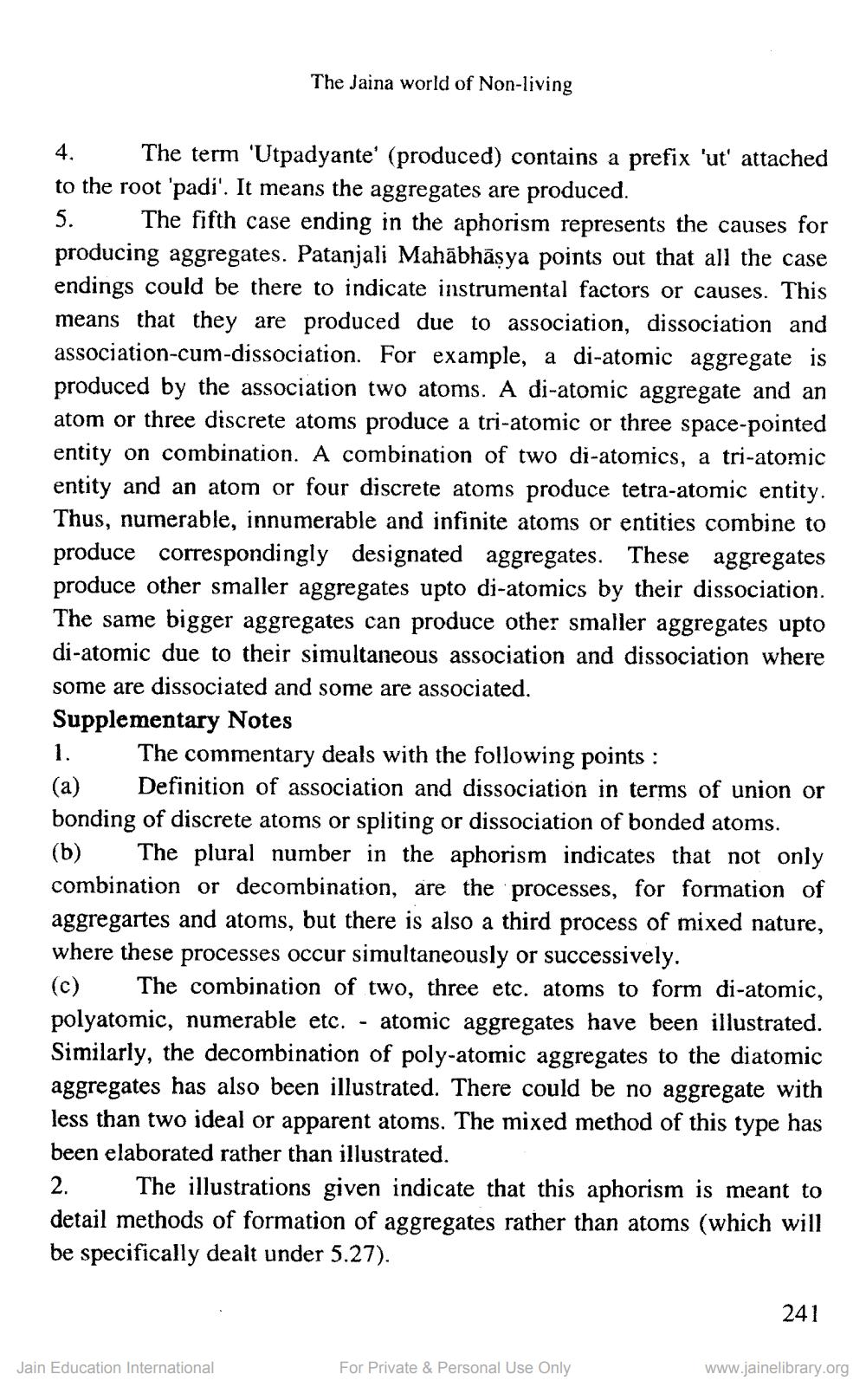________________
The Jaina world of Non-living
4. The term 'Utpadyante' (produced) contains a prefix 'ut' attached to the root 'padi'. It means the aggregates are produced.
5. The fifth case ending in the aphorism represents the causes for producing aggregates. Patanjali Mahābhāṣya points out that all the case endings could be there to indicate instrumental factors or causes. This means that they are produced due to association, dissociation and association-cum-dissociation. For example, a di-atomic aggregate is produced by the association two atoms. A di-atomic aggregate and an atom or three discrete atoms produce a tri-atomic or three space-pointed entity on combination. A combination of two di-atomics, a tri-atomic entity and an atom or four discrete atoms produce tetra-atomic entity. Thus, numerable, innumerable and infinite atoms or entities combine to produce correspondingly designated aggregates. These aggregates produce other smaller aggregates upto di-atomics by their dissociation. The same bigger aggregates can produce other smaller aggregates upto di-atomic due to their simultaneous association and dissociation where some are dissociated and some are associated.
Supplementary Notes
1.
The commentary deals with the following points:
(a) Definition of association and dissociation in terms of union or bonding of discrete atoms or spliting or dissociation of bonded atoms. (b) The plural number in the aphorism indicates that not only combination or decombination, are the processes, for formation of aggregartes and atoms, but there is also a third process of mixed nature, where these processes occur simultaneously or successively.
(c) The combination of two, three etc. atoms to form di-atomic, polyatomic, numerable etc. atomic aggregates have been illustrated. Similarly, the decombination of poly-atomic aggregates to the diatomic aggregates has also been illustrated. There could be no aggregate with less than two ideal or apparent atoms. The mixed method of this type has been elaborated rather than illustrated.
2.
The illustrations given indicate that this aphorism is meant to detail methods of formation of aggregates rather than atoms (which will be specifically dealt under 5.27).
Jain Education International
-
For Private & Personal Use Only
241
www.jainelibrary.org




